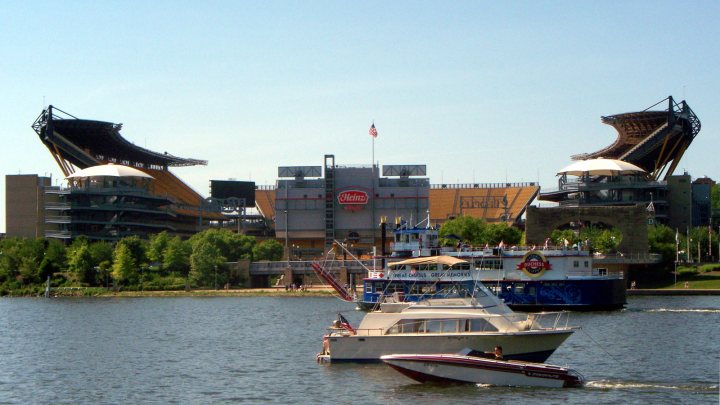
Another view of the Allegheny station, this time from the Carnegie Science Center. A rush-hour two-car train is waiting on the platform.
The subway is free all the way from here under the Allegheny and through to First Avenue on the other side of downtown Pittsburgh. The extension of the free zone to the North Side is sponsored by the Stadium Authority and the Rivers Casino, so old Pa Pitt cannot in good conscience say that gambling never did anything for him. He still has never set foot in the casino, but he is grateful for the free ride.





















